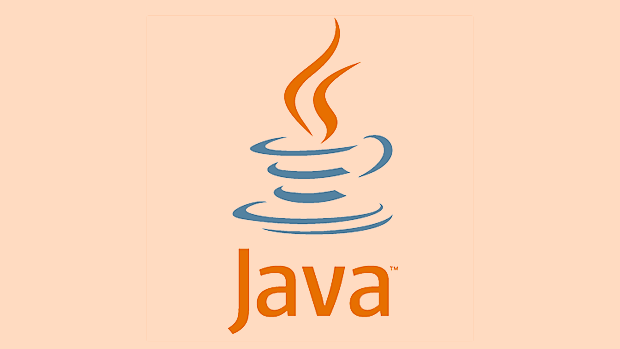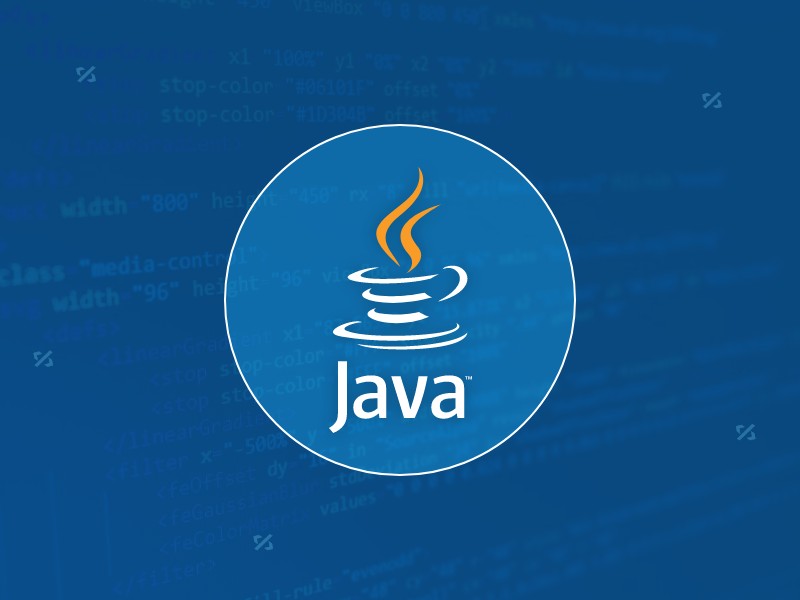Java 8's Lambda expressions make the code more concise by simplifying the anonymous internal class implementation. 1. The basic syntax is (parameter list) -> { method body}, such as Runnable r = () -> System.out.println("Hello"); 2. It is often used for collection traversal and sorting, such as names.forEach(name -> System.out.println(name)) and numbers.sort((a, b) -> a.compareTo(b)); 3. It can only be used for functional interfaces, that is, interfaces with only one abstract method, such as Runnable, Supplier, Consumer, Function, Predicate; 4. The scope of the variable must be final or effectively final, this points to the outer object. Lambda is very practical in handling collections, event listening, and thread tasks, improving development efficiency.

Java 8 introduces Lambda expressions to make the code more concise and readable. If you have written many anonymous internal classes before to implement single-method interfaces (such as Runnable or Comparator ), you will find that Lambda can greatly reduce boilerplate code.

The following sections will explain clearly how to use Lambda expressions, which are suitable for those who are new to Java 8.

Understand the basic syntax of Lambda
The structure of a Lambda expression is actually very simple:
(參數(shù)列表) -> { 方法體}
Let's give the simplest example:

// Traditional writing method Runnable r = new Runnable() {
public void run() {
System.out.println("Hello");
}
};
// Using Lambda
Runnable r = () -> System.out.println("Hello");A few points to note:
- If there are no parameters, brackets cannot be saved.
- If there is only one statement, you can not write
{}andreturn(if it is the case of return value). - If there are multiple statements, it must be wrapped in
{}, and if there is a return value, addreturn.
Common usage scenarios: collection traversal and sorting
One of the most common uses of Lambda is to simplify collection operations. For example, you want to traverse or sort a List:
Traversal List
List<String> names = Arrays.asList("Alice", "Bob", "Charlie");
// This used to be for (String name : names) {
System.out.println(name);
}
// Lambda writing method names.forEach(name -> System.out.println(name)); The forEach method is used here. The passed parameters are an implementation of a Consumer interface, and Lambda is used to implement it.
Sort List
List<Integer> numbers = Arrays.asList(5, 2, 8, 1);
// Previous practices Collections.sort(numbers, new Comparator<Integer>() {
public int compare(Integer a, Integer b) {
return a.compareTo(b);
}
});
// Lambda version numbers.sort((a, b) -> a.compareTo(b)); Here (a, b) are two parameters, -> is followed by an expression that returns the comparison result. This writing is clear and concise.
Functional interface is the basis of Lambda
Lambda can only be used for functional interfaces - that is, interfaces with only one abstract method. Java 8 provides some commonly used functional interfaces, such as:
-
Runnable(no parameters, no return) -
Supplier<T>(no parameter returns) -
Consumer<T>(with parameters but no return) -
Function<T, R>(with parameters and return) -
Predicate<T>(Judgement Conditions)
You can define the functional interface yourself, just make sure it has only one abstract method, or add @FunctionalInterface annotation to clarify this intention.
For example:
@FunctionalInterface
interface MathOperation {
int operate(int a, int b);
}Then you can implement it with Lambda like this:
MathOperation add = (a, b) -> ab; MathOperation multiply = (a, b) -> a * b;
Pay attention to variable scope and this keywords
Two things to note when using external variables in Lambda:
- You can access final variables or variables equivalent to final (that is, they will not change after assignment).
-
thisin a Lambda expression points to a peripheral object, not the Lambda itself (this is different from anonymous classes).
for example:
int factor = 2;
List<Integer> list = Arrays.asList(1, 2, 3);
list.forEach(item -> {
int result = item * factor; // No problem here, because factor is effectively final
System.out.println(result);
}); But if you try to modify factor , the compiler will report an error.
Basically that's it. Although Lambda expressions seem simple, they are very practical in actual development, especially in handling collections, event listening, thread tasks, etc. I may not be used to it at first, so I will be able to write a few more times.
The above is the detailed content of Implementing Lambda Expressions in Java.. For more information, please follow other related articles on the PHP Chinese website!

Hot AI Tools

Undress AI Tool
Undress images for free

Undresser.AI Undress
AI-powered app for creating realistic nude photos

AI Clothes Remover
Online AI tool for removing clothes from photos.

Clothoff.io
AI clothes remover

Video Face Swap
Swap faces in any video effortlessly with our completely free AI face swap tool!

Hot Article

Hot Tools

Notepad++7.3.1
Easy-to-use and free code editor

SublimeText3 Chinese version
Chinese version, very easy to use

Zend Studio 13.0.1
Powerful PHP integrated development environment

Dreamweaver CS6
Visual web development tools

SublimeText3 Mac version
God-level code editing software (SublimeText3)
 Asynchronous Programming Techniques in Modern Java
Jul 07, 2025 am 02:24 AM
Asynchronous Programming Techniques in Modern Java
Jul 07, 2025 am 02:24 AM
Java supports asynchronous programming including the use of CompletableFuture, responsive streams (such as ProjectReactor), and virtual threads in Java19. 1.CompletableFuture improves code readability and maintenance through chain calls, and supports task orchestration and exception handling; 2. ProjectReactor provides Mono and Flux types to implement responsive programming, with backpressure mechanism and rich operators; 3. Virtual threads reduce concurrency costs, are suitable for I/O-intensive tasks, and are lighter and easier to expand than traditional platform threads. Each method has applicable scenarios, and appropriate tools should be selected according to your needs and mixed models should be avoided to maintain simplicity
 Best Practices for Using Enums in Java
Jul 07, 2025 am 02:35 AM
Best Practices for Using Enums in Java
Jul 07, 2025 am 02:35 AM
In Java, enums are suitable for representing fixed constant sets. Best practices include: 1. Use enum to represent fixed state or options to improve type safety and readability; 2. Add properties and methods to enums to enhance flexibility, such as defining fields, constructors, helper methods, etc.; 3. Use EnumMap and EnumSet to improve performance and type safety because they are more efficient based on arrays; 4. Avoid abuse of enums, such as dynamic values, frequent changes or complex logic scenarios, which should be replaced by other methods. Correct use of enum can improve code quality and reduce errors, but you need to pay attention to its applicable boundaries.
 Understanding Java NIO and Its Advantages
Jul 08, 2025 am 02:55 AM
Understanding Java NIO and Its Advantages
Jul 08, 2025 am 02:55 AM
JavaNIO is a new IOAPI introduced by Java 1.4. 1) is aimed at buffers and channels, 2) contains Buffer, Channel and Selector core components, 3) supports non-blocking mode, and 4) handles concurrent connections more efficiently than traditional IO. Its advantages are reflected in: 1) Non-blocking IO reduces thread overhead, 2) Buffer improves data transmission efficiency, 3) Selector realizes multiplexing, and 4) Memory mapping speeds up file reading and writing. Note when using: 1) The flip/clear operation of the Buffer is easy to be confused, 2) Incomplete data needs to be processed manually without blocking, 3) Selector registration must be canceled in time, 4) NIO is not suitable for all scenarios.
 How Java ClassLoaders Work Internally
Jul 06, 2025 am 02:53 AM
How Java ClassLoaders Work Internally
Jul 06, 2025 am 02:53 AM
Java's class loading mechanism is implemented through ClassLoader, and its core workflow is divided into three stages: loading, linking and initialization. During the loading phase, ClassLoader dynamically reads the bytecode of the class and creates Class objects; links include verifying the correctness of the class, allocating memory to static variables, and parsing symbol references; initialization performs static code blocks and static variable assignments. Class loading adopts the parent delegation model, and prioritizes the parent class loader to find classes, and try Bootstrap, Extension, and ApplicationClassLoader in turn to ensure that the core class library is safe and avoids duplicate loading. Developers can customize ClassLoader, such as URLClassL
 Handling Common Java Exceptions Effectively
Jul 05, 2025 am 02:35 AM
Handling Common Java Exceptions Effectively
Jul 05, 2025 am 02:35 AM
The key to Java exception handling is to distinguish between checked and unchecked exceptions and use try-catch, finally and logging reasonably. 1. Checked exceptions such as IOException need to be forced to handle, which is suitable for expected external problems; 2. Unchecked exceptions such as NullPointerException are usually caused by program logic errors and are runtime errors; 3. When catching exceptions, they should be specific and clear to avoid general capture of Exception; 4. It is recommended to use try-with-resources to automatically close resources to reduce manual cleaning of code; 5. In exception handling, detailed information should be recorded in combination with log frameworks to facilitate later
 How does a HashMap work internally in Java?
Jul 15, 2025 am 03:10 AM
How does a HashMap work internally in Java?
Jul 15, 2025 am 03:10 AM
HashMap implements key-value pair storage through hash tables in Java, and its core lies in quickly positioning data locations. 1. First use the hashCode() method of the key to generate a hash value and convert it into an array index through bit operations; 2. Different objects may generate the same hash value, resulting in conflicts. At this time, the node is mounted in the form of a linked list. After JDK8, the linked list is too long (default length 8) and it will be converted to a red and black tree to improve efficiency; 3. When using a custom class as a key, the equals() and hashCode() methods must be rewritten; 4. HashMap dynamically expands capacity. When the number of elements exceeds the capacity and multiplies by the load factor (default 0.75), expand and rehash; 5. HashMap is not thread-safe, and Concu should be used in multithreaded
 Explained: Java Polymorphism in Object-Oriented Programming
Jul 05, 2025 am 02:52 AM
Explained: Java Polymorphism in Object-Oriented Programming
Jul 05, 2025 am 02:52 AM
Polymorphism is one of the core features of Java object-oriented programming. Its core lies in "one interface, multiple implementations". It implements a unified interface to handle the behavior of different objects through inheritance, method rewriting and upward transformation. 1. Polymorphism allows the parent class to refer to subclass objects, and the corresponding methods are called according to the actual object during runtime; 2. The implementation needs to meet the three conditions of inheritance relationship, method rewriting and upward transformation; 3. It is often used to uniformly handle different subclass objects, collection storage and framework design; 4. When used, only the methods defined by the parent class can be called. New methods added to subclasses need to be transformed downward and accessed, and pay attention to type safety.
 Effective Use of Java Enums and Best Practices
Jul 07, 2025 am 02:43 AM
Effective Use of Java Enums and Best Practices
Jul 07, 2025 am 02:43 AM
Java enumerations not only represent constants, but can also encapsulate behavior, carry data, and implement interfaces. 1. Enumeration is a class used to define fixed instances, such as week and state, which is safer than strings or integers; 2. It can carry data and methods, such as passing values ??through constructors and providing access methods; 3. It can use switch to handle different logics, with clear structure; 4. It can implement interfaces or abstract methods to make differentiated behaviors of different enumeration values; 5. Pay attention to avoid abuse, hard-code comparison, dependence on ordinal values, and reasonably naming and serialization.






